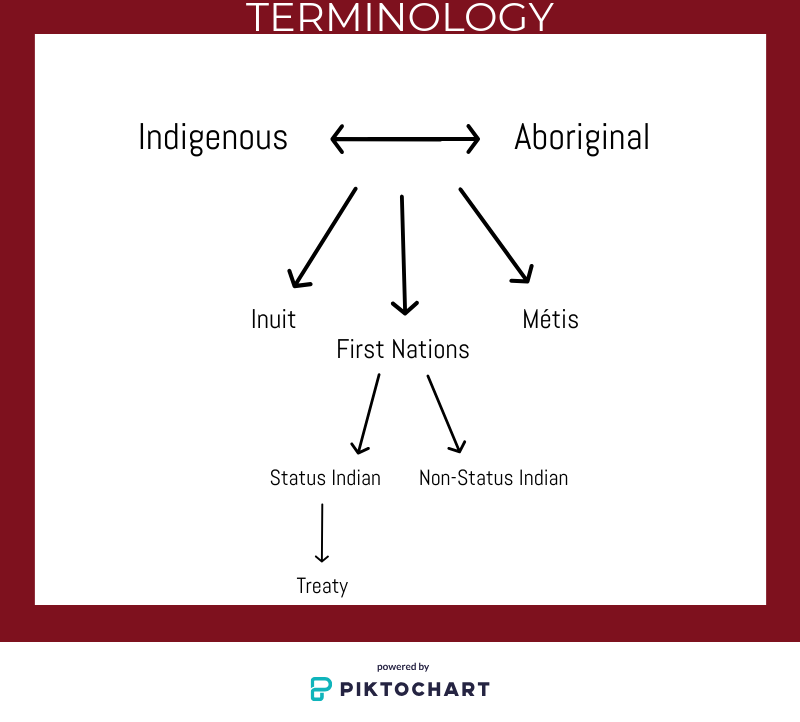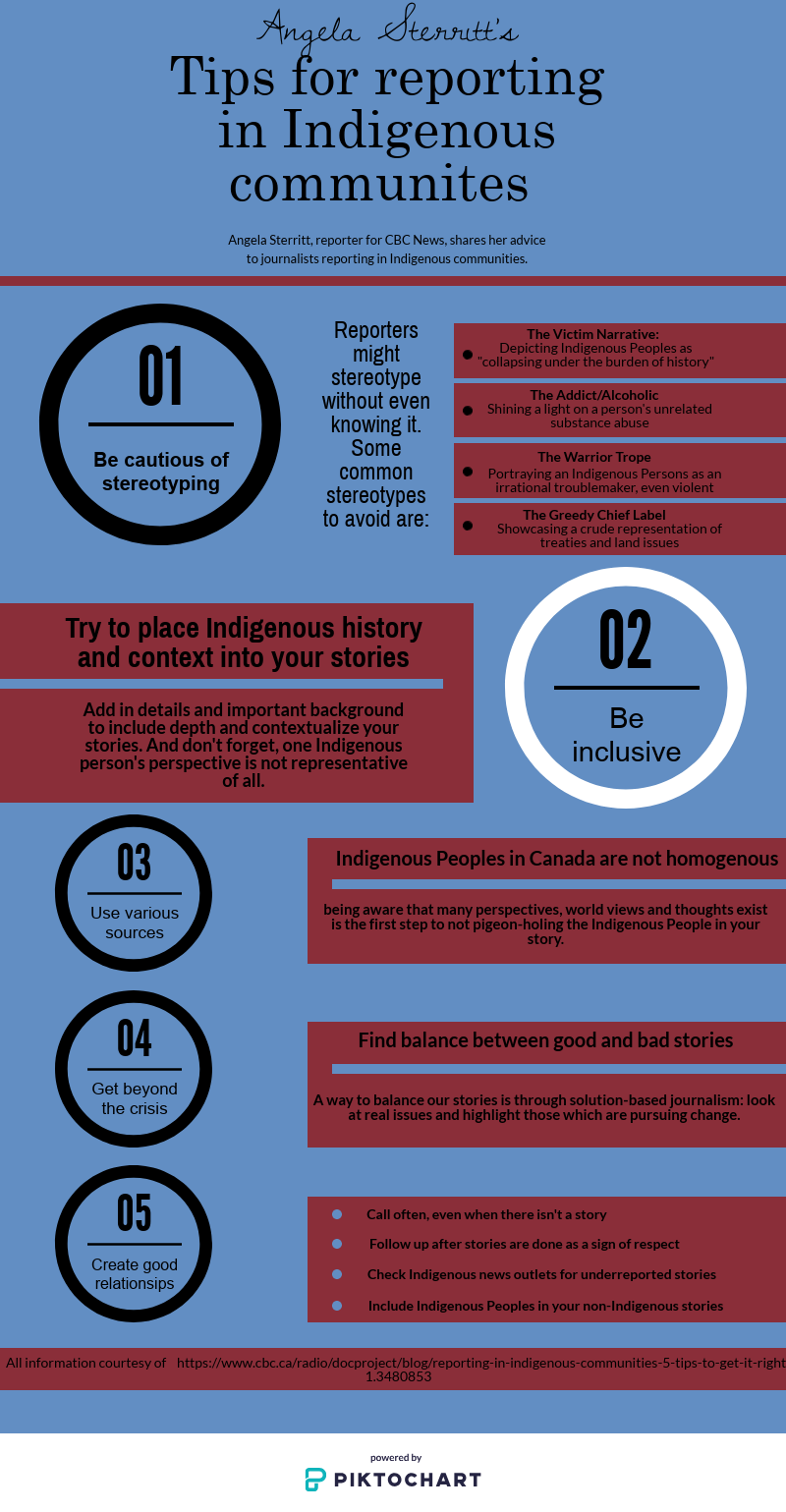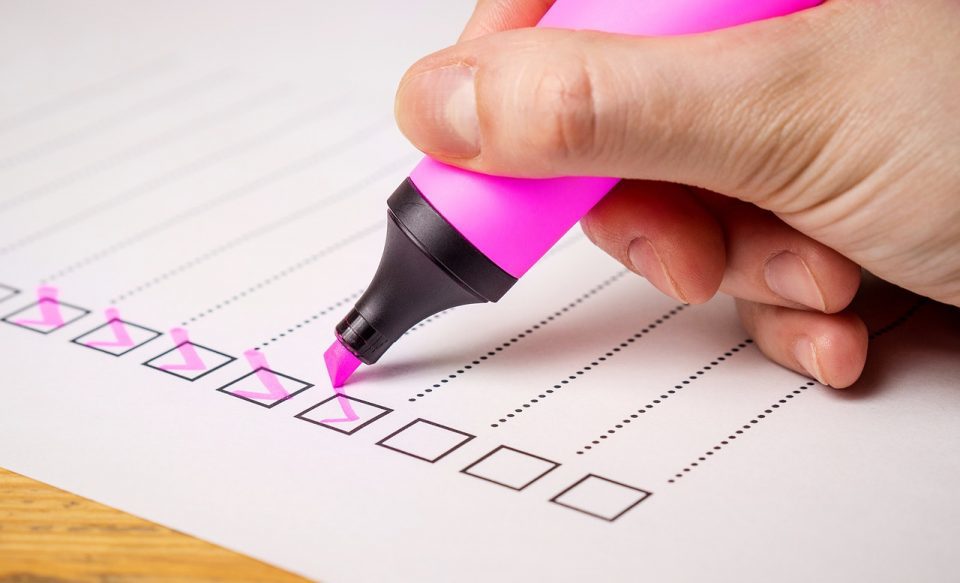Award-winning Gitxsan reporter Angela Sterritt says that journalists can do a much better job of covering Indigenous communities. In a webinar hosted by Magazines Canada, and aptly named, “Reporting in Indigenous Communities: How to Get it Right,” she highlighted problems in current Indigenous coverage and offered tips for future stories.
Among her tips, Sterritt highlighted that newsrooms need more diversity, reporters should strive to accurately identify their sources and avoid stereotypes, and that there needs to be a balance of positive and negative coverage of Indigenous communities.
Newsrooms need more Indigenous reporters
Paramount among these tips was a call for diversity in reporters. Newsrooms need to hire more journalists from Indigenous communities, Sterritt said.
“That presence of an Indigenous person in your organization is so important to influence some of those conversations that are happening within the community.”
Accurately identifying sources
Another area where journalists can get it right when reporting on Indigenous communities is in asking an interview subject how they wish to be identified.

Chart: Linsey Tombler
“When you’re reporting and there’s another way to use an umbrella term, you should always use Indigenous. But you should always use their nation… Find out how to say the name. Find out their history,” Sterritt said.
Avoiding stereotypes
There are more than 634 First Nations in Canada, speaking more than 50 different languages. According to Statistics Canada, as of 2016 the First Nations population grew to 977,230 people.
Yet, as Sterritt pointed out in the webinar, this diversity often isn’t reflected in media coverage of Indigenous communities. Instead, communities are often pigeonholed into inaccurate stereotypes. These stereotypes, she listed, include “the greedy chief, the victim, the addict and alcoholic, and the warrior.”
Duncan McCue, a CBC journalist who often reports on Indigenous communities, addresses similar tropes in his guide, “Reporting on Indigenous Communities,” noting that Indigenous people only make the news if they’re “drumming, dancing, drunk, or dead.” McCue has coined this as “The WD4 Rule on How Indians Make The News.”
Balancing positive and negative coverage
A 2013 report by Journalists for Human Rights (JHR), which Sterritt referenced in the webinar, found that news stories about Indigenous issues made up less than one percent of media coverage, with most of that coverage focused on crises that happened within Indigenous communities. The majority of the coverage was negative.
“It’s not an accurate portrayal of Indigenous people, when in Canada, five percent of the population is Indigenous,” Sterritt said. “We’re not homogenous…we’re distinct, we’re all distinct nations.”
To ensure accurate reporting, journalists need to be constantly checking in with their sources, questioning how they want to be identified and the context of their quotes. And when newsrooms do make mistakes, Sterritt said, keep checking in to make sure corrections are made accurately and to the community’s satisfaction.
Because these stories matter.
“There’s a huge appetite for people to see [the] smaller communities represented, and urban Indigenous communities too,” Sterritt said. “We’re the fastest growing population across cities in Canada, so these are in the public interest. These are important stories that are part of public discourse.”

